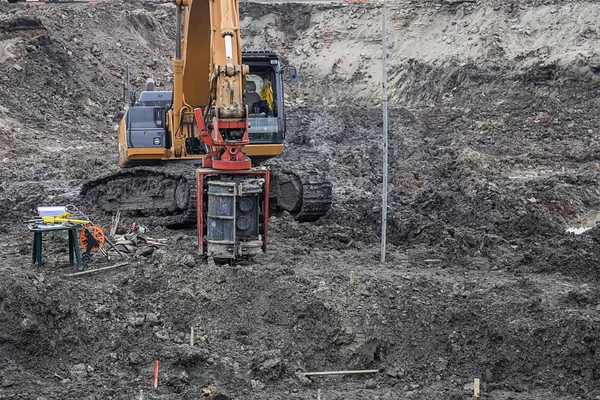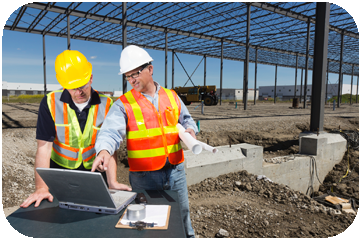Just How Geo Tech Engineering Supports Large-Scale Construction Projects
Just How Geo Tech Engineering Supports Large-Scale Construction Projects
Blog Article
An Extensive Appearance at the Range of Technique for Geotechnical Engineers and Their Influence On Task Usefulness and Threat Mitigation
The extent of technique for geotechnical engineers encompasses a variety of essential obligations that directly affect project feasibility and threat administration. From performing detailed website examinations to evaluating subsurface problems, their proficiency is essential fit foundation style and building approaches. As jobs increasingly come across complex geological obstacles, understanding the nuanced duty of these professionals ends up being crucial for guaranteeing effective outcomes. The implications of their job expand past simple evaluation; they can considerably change the trajectory of a task. What certain approaches do geotechnical designers utilize to browse these intricacies efficiently?
Functions and Obligations of Geotechnical Engineers
Geotechnical engineers play an important function in the foundation of building and construction jobs, making certain that structures are developed on solid ground. Geotechnical designers conduct website examinations to gather crucial information concerning subsurface problems.

Cooperation is additionally a key aspect of their role; they function very closely with civil engineers, architects, and ecological professionals to ensure that geotechnical factors to consider are incorporated right into general project planning. Inevitably, the competence of geotechnical designers is essential in advertising the safety and security, sustainability, and stability of building undertakings.
Trick Locations of Geotechnical Analysis
Dirt samples and geological surveys are fundamental aspects in the crucial areas of geotechnical evaluation. These tasks supply critical information relating to the physical and chemical residential properties of the subsurface products, allowing designers to examine site problems accurately. The evaluation generally incorporates dirt classification, compaction, shear strength, and leaks in the structure, all of which are vital for understanding the behavior of dirts under various loading problems.
Another significant location of focus is incline stability analysis, which examines the danger of landslides or soil disintegration. This involves examining the geometry of slopes, soil kinds, and groundwater conditions. Website characterization is additionally important, as it entails a detailed investigation of the site's background, consisting of previous building and construction, contamination, and all-natural threats.
Furthermore, groundwater evaluation plays a vital function in geotechnical assessment, influencing both the style and building and construction phases. Comprehending the groundwater table, flow direction, and potential changes is essential for efficient foundation style and stormwater monitoring.
Together, these essential areas of geotechnical evaluation form a comprehensive framework that notifies decision-making procedures, making certain risk-free and lasting design methods while decreasing potential risks related to subsurface conditions.
Influence On Job Usefulness
The usefulness of a construction project hinges significantly on the insights gained from geotechnical investigations. These investigations provide vital information relating to dirt properties, groundwater problems, and subsurface qualities, which are essential for figuring out the viability of a site for building. By examining aspects such as soil bearing capacity, settlement possibility, and incline security, geotechnical engineers play a critical role in assessing whether a project can proceed as prepared More Help or if modifications are necessary.
In addition, the outcomes of geotechnical studies straight influence project design and construction approaches. Exact geotechnical data permits notified decision-making, guaranteeing that architectural designs fit site-specific problems and adhere to regulatory demands. This procedure assists imp source in optimizing source allotment, therefore minimizing unanticipated delays and cost overruns.
In addition, a complete geotechnical analysis improves the total stability of a job by identifying prospective obstacles early in the preparation phase. By resolving these obstacles proactively, stakeholders can boost the task's likelihood of success, making sure that it satisfies both economic and useful objectives. In summary, the contributions of geotechnical designers are integral to establishing job usefulness, consequently preparing for reliable job execution.
Risk Mitigation Approaches
While building tasks naturally entail numerous uncertainties, executing efficient danger reduction approaches can dramatically minimize potential problems occurring from geotechnical aspects. Geotechnical designers play a critical duty in recognizing, analyzing, and addressing risks related to subsurface problems, guaranteeing that jobs continue smoothly and continue to be within spending plan.
One key approach involves detailed site investigations, that include soil tasting, in-situ screening, and lab analysis. These assessments offer important data on soil composition, actions, and stamina, making it possible for designers to create foundations and earthworks that are both effective and secure. Furthermore, utilizing sophisticated modeling techniques, such as limited aspect analysis, permits engineers to predict just how soil and structural interactions might progress under different loading problems.
Another effective reduction technique is the execution of ideal style alterations, such as using support techniques or taking on different building approaches, which can improve security and minimize vulnerability to geotechnical concerns. Additionally, constant surveillance of site conditions throughout building and construction can help with prompt treatments, hence lessening the chance of unexpected difficulties.
Study and Real-World Applications
Study supply beneficial insights have a peek at this site into the functional applications of geotechnical design principles and highlight the performance of danger reduction strategies in real-world situations. One remarkable instance is the construction of the Millennium Dome in London, where ingenious ground treatment strategies were applied to address difficult soil conditions. By employing deep concrete blending and dirt stablizing approaches, designers successfully created a steady foundation that mitigated possible negotiation risks, ensuring the project's expediency.
One more case is the stablizing of the hillside for the new highway in The golden state, where extensive slope analysis and surveillance were used. Geotechnical designers used preserving wall surfaces and drain systems to take care of groundwater, significantly reducing the risk of landslides. This proactive strategy not just protected the integrity of the highway but additionally boosted public security.
In addition, the growth of a major airport terminal demonstrated the importance of comprehensive website examinations. geo tech engineering. Geotechnical designers determined problematic dirt layers and recommended particular structure styles, resulting in an effective job completion with decreased delays. These study highlight the crucial function that geotechnical engineers play in analyzing dangers and implementing reliable services, consequently boosting project feasibility and total success
Conclusion

By evaluating aspects such as soil bearing capacity, negotiation capacity, and slope security, geotechnical engineers play a crucial function in evaluating whether a job can continue as prepared or if modifications are essential.
In summary, the payments of geotechnical designers are essential to developing job feasibility, consequently laying the groundwork for effective task execution.
Geotechnical designers determined bothersome soil layers and recommended specific foundation styles, leading to an effective task conclusion with lessened delays. geo tech engineering. These case researches underscore the important role that geotechnical engineers play in assessing threats and carrying out reliable options, therefore enhancing task expediency and general success
With effective threat mitigation methods and the application of innovative modeling techniques, geotechnical designers improve job end results and lessen threats related to dirt and groundwater problems.
Report this page